Cost of Ownership: Navigating the Real Investment
Cost of Ownership: Navigating the Real Investment
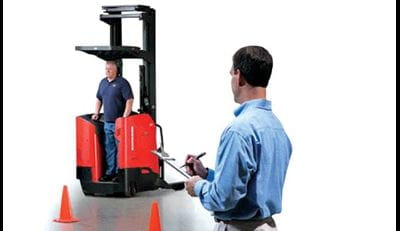
With the initial purchase price of equipment constituting only 26% of the total cost of ownership it is critical to break down these costs and determine solutions that support lean operations. In this article we analyze what these costs are and discuss a ways to address the largest underlying costs.
As a conscious consumer, you know that the purchase price of equipment is only a fraction of the total cost. You spend your time meticulously comparing specifications and efficiency ratings, you comb through reviews and collect anecdotes from colleagues on the quality and endurance of each option. You do the leg work, consulting endlessly with your team to ensure that you won’t have to throw good money after bad on constant repairs, ferocious energy consumption, or machinery that is simply a mismatch for your operational constraints and goals. When you feel satisfied that you have explored every option to its fullest extent, you carefully shop around for the best financing and interest rates. Yet you may or may not know that all of this leg work makes up only a meager 26% of the total cost of ownership. Upon further analysis we find that labor makes up a whopping 74% of the actual cost of owning a truck.
So what options do we have to either minimize or get the most out of this expense? Well, you could automate. A popular drug store and convenience mart was able to reduce their labor by 72% when they installed a horizontal carousel, and this is no anomaly. Due to improved scalability, businesses of all sizes regularly realize that automation is an effective way to battle a scarce labor market, human error, and the various other complications that go along with employing people. And labor reduction isn't the only statistic shocking the industry. Integration of automation leads to productivity results that are almost hard to believe. Take results from Kardex Remstar’s automated storage and retrieval systems as an example:
- Productivity increased by up to 400 %.
- Up to 85 % more efficient use of space.
- Picking accuracy improved by up to 99 %.
- Stock level accuracy of up to 99 %.
Automation is a great way to hit several operational goals at once, including reducing labor costs. Though not every business lends itself to a direct and easy transition into automation, so we move on to other methods of minimizing or optimizing the workforce. As a manager or business owner, this is likely something that you already try to do in order to balance the cost to productivity ratio. Of course you can hire a consultant to find out where you might be able to cut corners, but that comes with a hefty price tag. By far the best option to maximize what you get out of that 74% is to offer training, training, and more training!
WITH LABOR ACCOUNTING FOR 74% OF LIFT TRUCK OWNERSHIP COSTS, OPERATOR TRAINING IS CRITICAL TO OPERATIONAL EFFICIENCY AND PROFITABILIT.
Is training really a silver bullet?
We can't say that training will solve all of your problems, but darn near! Extensively trained employees are confident in proper equipment use. Proper use of equipment leads to equipment longevity, fewer accidents, and less damaged product. In addition to operating more consciously, operators that are confident in their proficiency also tend to be more efficient and productive. The name of the game is preserving and building off of your current investments. Imagine if, instead of ending a shift wondering what had been damaged, you realized that you moved 30% more product!
Additional training is a win-win. Assets lasts longer and production picks up. Research suggests that training also helps with onboarding and employee retention. Training helps new and temporary employees get in the swing of things and become productive and autonomous far sooner. Training shows all employees, new or old, that you are willing to provide the tools to accomplish the job, and that you are willing to invest in their personal development as employees. The recognition of this investment increases morale, leading to happier employees that are more skilled and less likely to leave. Now you have productive employees that last as long as the equipment, and vice versa.
I’m on board! What do I do?
The first thing that we do is figure out what kind of training will suit your needs. But what are your needs, really? Training equipment operators seems like the obvious choice in order to immediately increase productivity and protect your people, product, and equipment, but this may not be enough. While operators surely do their best to keep those working around them out of harms way, the human variable inevitably creates a host of hazards and obstacles. For this reason, it may pay to invest in pedestrian training. This type of training commonly teaches pedestrians proper protocol for conducting themselves around equipment, such as environmental awareness and visual communication. Even in the absence of heavy machinery, this type of training is excellent for keeping a workforce up to date on OSHA regulations and general workplace concerns. Topics often include how and when to use Personal Protective Equipment (PPE) and other best-practice injury prevention techniques. Improper lifting can take an employee out of your labor force just as quickly as a forklift gone rogue! Proper training translates to overall fewer citations and employee longevity, which makes all the difference in a tight labor market.
Other training that may save you in the long run is technician training. Improper technique, combined with trial and error, can lead to chasing a repair down the proverbial rabbit hole. If things really go awry, it’s possible that you still might end up needing professional intervention! Keeping your maintenance personnel up to date on tools, technologies, and techniques can decrease equipment downtime, as well as capital spent on unnecessary parts and labor.
RECAP: There are several types of employees that benefit from training.
- Operators .
- Pedestrians
- Technicians
Once you have decided which employees will receive training, it is important to decide how you want to go about delivering the training. Sure, you could just throw an operator into the field and let them have at it, but this disrupts the work flow and might result in the damage that we are trying to avoid by increasing training. The goal here is maximum skill retention with minimal disruption, and there are a variety of training formats that can accomplish just that. Formats include in-classroom, e-learning, and even virtual reality! All are valid options, each with their own advantages. See our list of pros and cons below.
Classroom
Pro: Complex topics easily addressed, learning between students.
Con: Group paced, Lower retention than more immersive options.
E-Learning
Pros: Self-paced, less space required, less time than in-classroom learning
Con: Lower retention than other options.
Virtual Reality
Pro: Immersive engagement leads to high retention, will not disrupt the work flow, controlled environment, realistic visuals provide real-time feedback, uses a real truck from your fleet, custom curriculum, simple setup.
Con: Can be a more expensive option, requires space to set up a stationary truck, one operator at a time.
Yet the delivery method is only one aspect of training to consider. When choosing a trainer or training program, it is important to consider what your needs and limitations are. Will you need custom curriculum or a combination of methods to suit your needs? Do you have the space and ability to host the session without disrupting your work flow, will your employees need to travel off campus? What credentials does the trainer or institution hold, and will the training session result in any credentials for your labor force, such as an OSHA certification? Furthermore, how often will you need these services? If you have high turnover, it may be easier and more cost effective to add a trainer to your staff or invest in the purchase of a Virtual Reality trainer. Be sure to take these needs into consideration as you seek out an appropriate program, and do not be afraid to ask for a consultation and needs analysis.
You May Also Like:
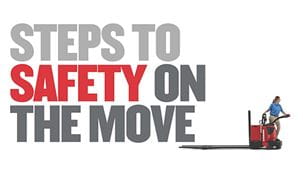
Heubel Shaw Forklift Training
Heubel Shaw provides you the training you need to stay OSHA compliant.
Learn More
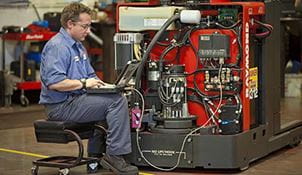
Lift Truck Service
HEUBEL·SHAW is your partner in asset protection information and service. We offer emergency and preventative services, and always have a team of certified technicians available as a knowledgeable resource.
Learn More
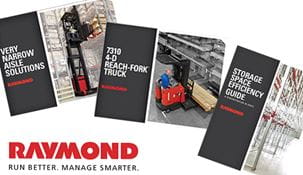
HEUBEL·SHAW Resources and Literature- Material Handling and Storage Solutions.
Welcome to the HEUBEL·SHAW Resource Center. Here you will find white papers and case studies, as well as brochures and literature for our Raymond, Kardex Remstar, Radioshuttle, and iWarehouse products and solutions.
Learn More
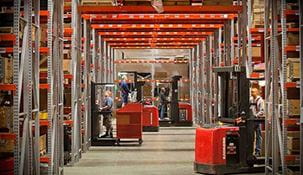
Fleet & Facility Optimization
Smarter warehouse management - from forklift fleet management and warehouse asset management to warehouse optimization, LMS and WMS solutions.
Learn More

